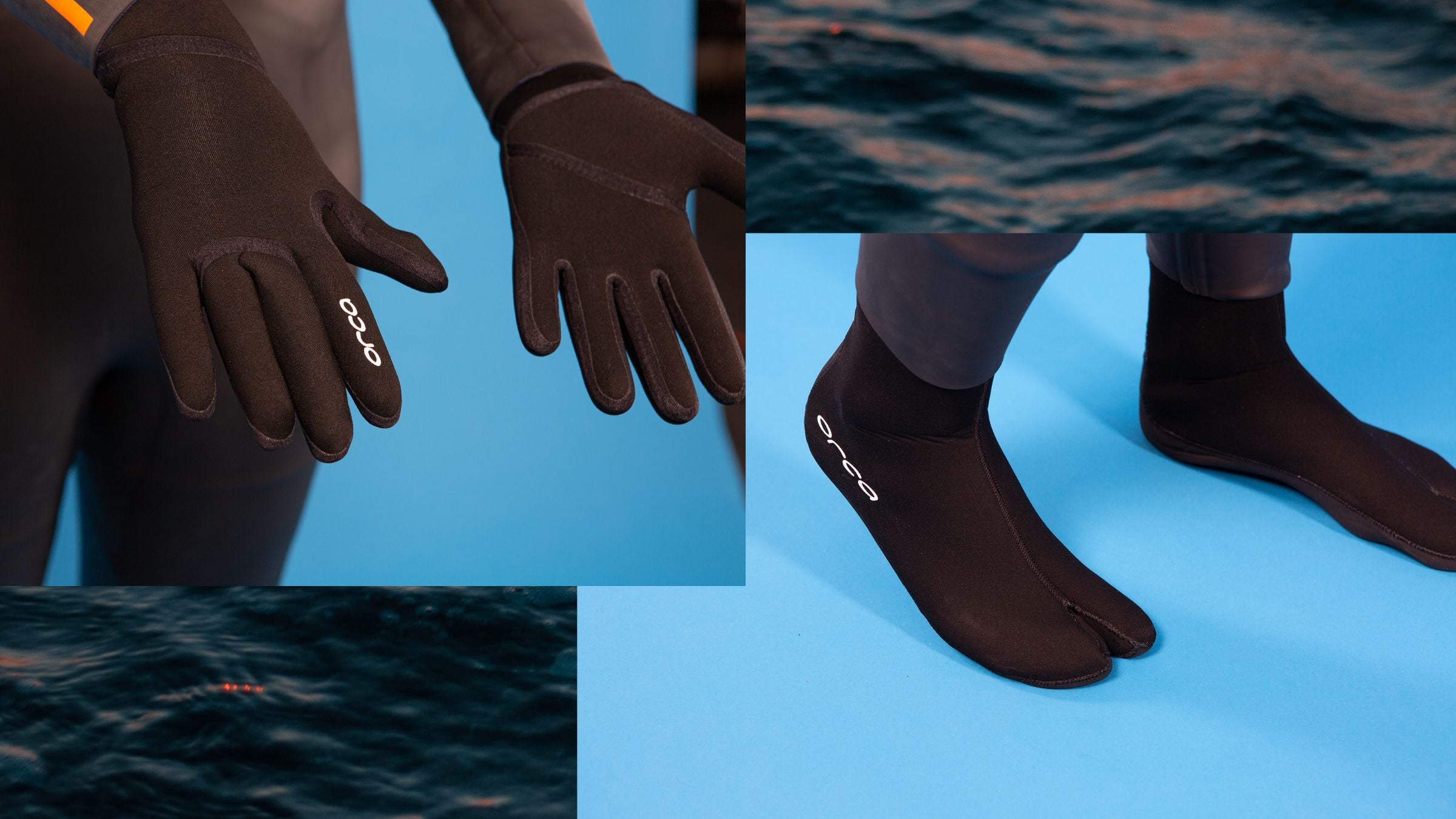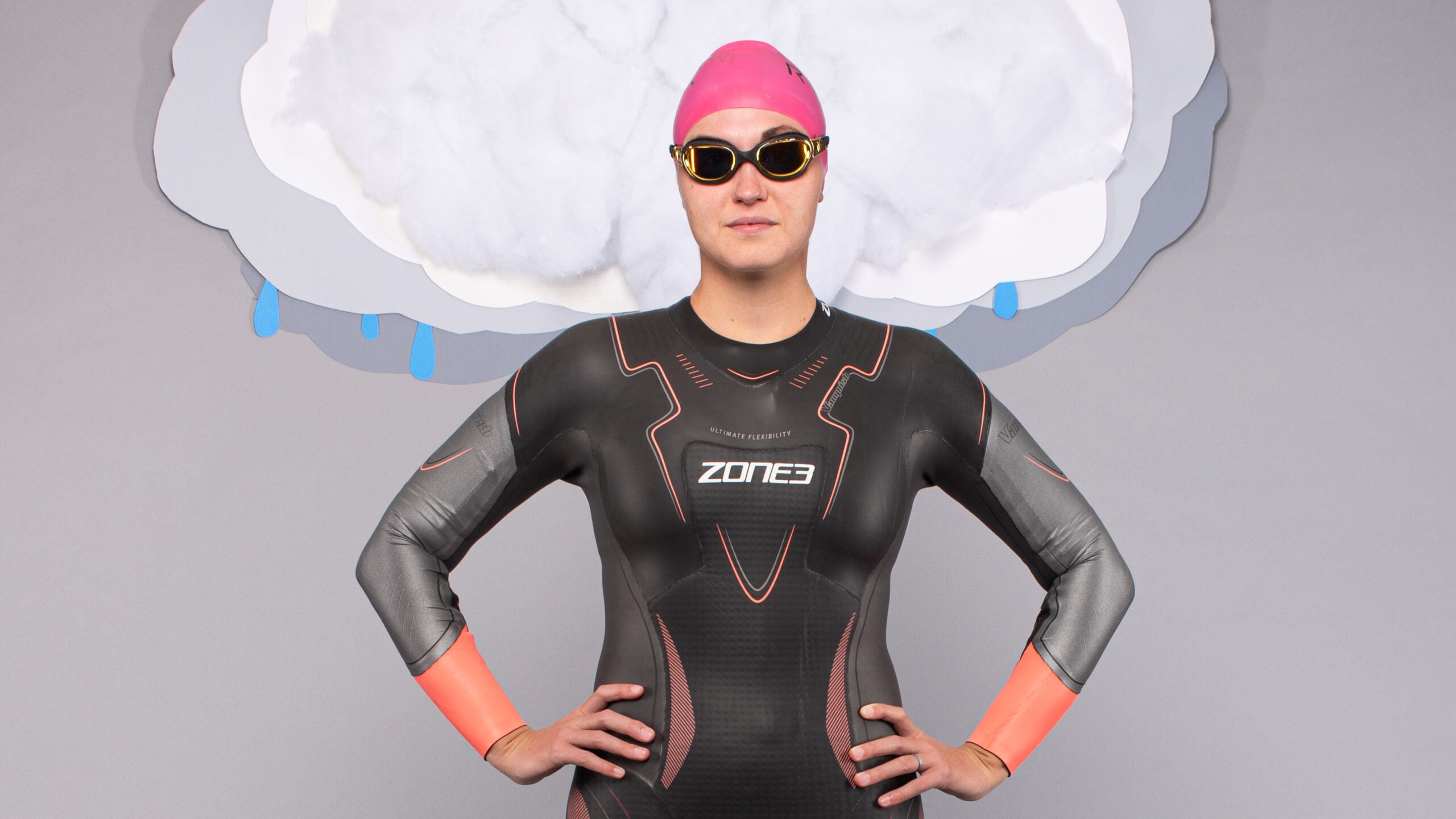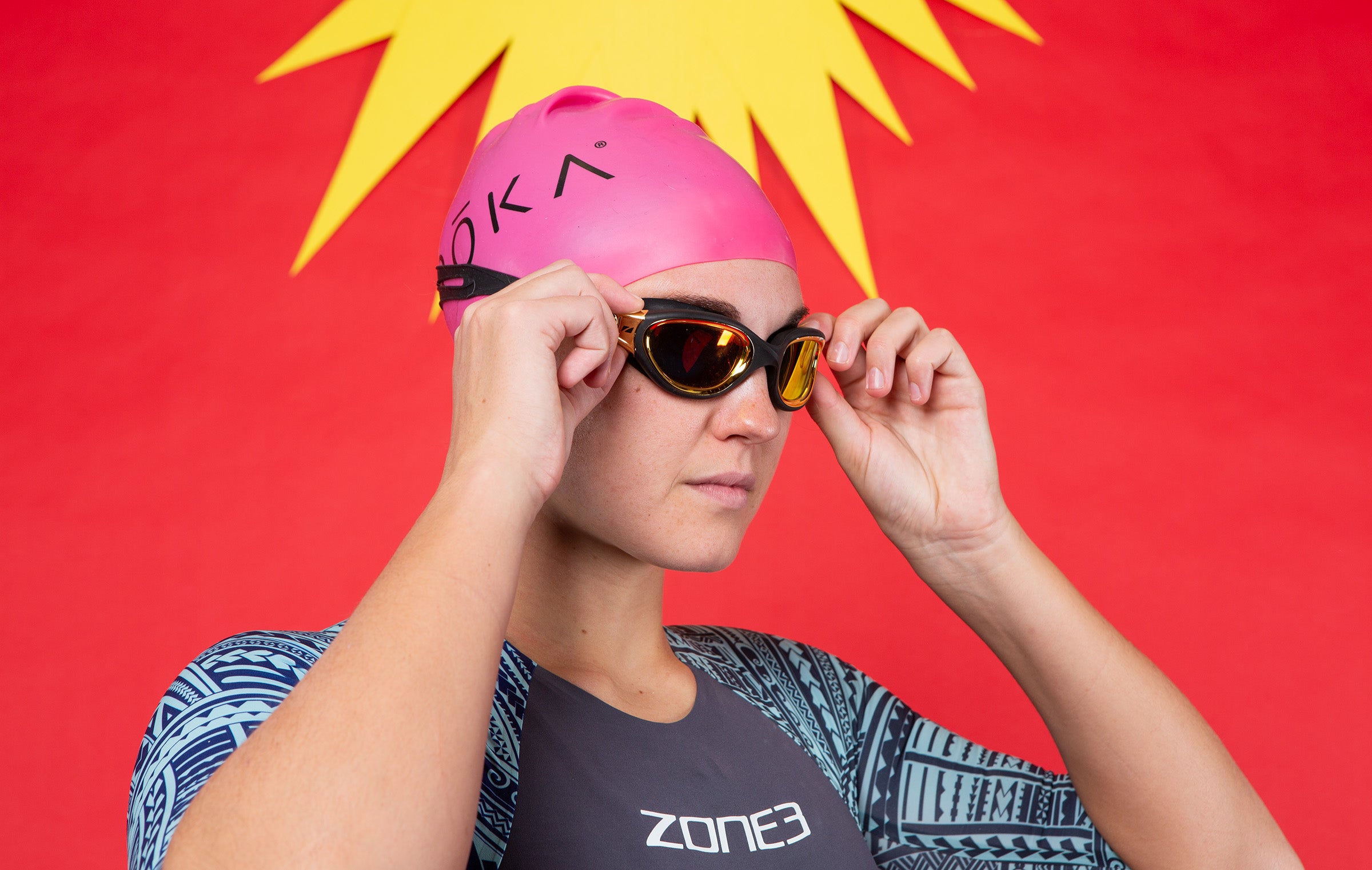New perk! Get after it with local recommendations just for you. Discover nearby events, routes out your door, and hidden gems when you sign up for the Local Running Drop.
Open water swimming is an activity that you most definitely want to be dressed appropriately for. It can be dangerous to either overheat or become hypothermic in the middle of a body of water.
Fortunately, there are a variety of gear combinations athletes can leverage to make the swim portion of a triathlon tolerable, temperature-wise. In fact, USA Triathlon (USAT) has parameters around what triathletes can and can’t wear for the swim depending on the water temperature.
RELATED: Triathlete’s Guide To Going From Pool To Open Water
USAT guidelines on wetsuits, by temperature
| Temperature | USAT Rule |
| 58* F or lower | Athletes must wear a wetsuit and may wear a neoprene cap, booties, and gloves |
| 65* F or lower | It is recommended that athletes wear a wetsuit |
| 78* F or lower | Athletes may wear a wetsuit |
| Between 78.1* F and 83.9* F | Athletes may wear a wetsuit, but will not be eligible for awards if they do so |
| 84* F or higher | Athletes may not wear a wetsuit, but can wear swimskins |
What to wear for open-water swimming; Cold

When the water is below 58*F, you won’t have to guess if the water is cold: you will feel it instantly from the second your big toe hits the edge of the swim start. It is common to encounter such cold water when competing in early season races or races whose swims are in the ocean.
According to USAT, athletes are required to wear a wetsuit when the water temperature is at or below 58*F. It is important to note though, that wetsuit neoprene thickness may never exceed 5mm regardless of the water temperature. If you’re thinking about what type of wetsuit to wear for the first time, always opt for a swimming-focused wetsuit and not a surfing or diving wetsuit; diving wetsuits have very thick neoprene and while they are warm, are difficult to swim in.
Luckily, you can still wear a swim-focused thermal wetsuit like the Orca Openwater RS1 Thermal seen here. The main difference in a thermal wetsuit designed for swimming is it may have an extra layer of neoprene between your upper chest and back to assist in keeping your core warm.
When the water is 58*F or lower, athletes are also permitted to wear a neoprene cap (over which you should wear your official race swim cap), booties, and gloves, so long as none of them offer propulsive assistance such as webbing—we like Orca’s Openwater Core Gloves, Hydro Booties, and Thermal Neoprene Swim Cap. And, of course, don’t forget the goggles.

RELATED: The Danger Lurking Behind “Getting Too Cold” In A Tri
What to wear for open-water swimming: Temperate

Fortunately, most triathlon swims will not be in the 58*F or colder range. Most fall between 65*F and 78*F, the upper boundary of what is called “wetsuit legal” temperature.
For a temperate swim, consider wearing a normal, non-thermal wetsuit (again, the neoprene must not exceed 5mm of thickness). Wearing a short-sleeved or a long-sleeved wetsuit is largely up to personal choice.
While some testing has revealed that long-sleeved wetsuits are faster due to more body coverage and buoyancy, many athletes prefer the freedom of a sleeveless wetsuit and find they swim faster without the restriction some may feel from sleeves.
Either way, a sleeveless or non-sleeved wetsuit won’t make a huge temperature difference in the 65*F to 78*F zone; go with what feels best.
In these temperatures, neoprene caps, booties, and gloves are not allowed. Rock on with the race swim cap, goggles, and normal triathlon wetsuit and you’ll be good to go.
RELATED: Ask A Gear Guru: Should I Wear A Sleeved or Sleeveless Wetsuit?
What to wear for open-water swimming: Warm

Races whose swims are in tropical locations (like the Ironman World Championship in Hawaii, which is never wetsuit-legal) or in shallow rivers or lakes tend to easily climb over the 78*F wetsuit legal boundary and into non-wetsuit legal territory.
When a race is deemed non-wetsuit legal, you have a couple of options: you can swim in your tri kit, which should be tight enough to eliminate major worries of fabric dragging through the water, or you can wear a swim skin, which is a tight, non-buoyant suit with short sleeves and mid-thigh cutoffs, over your tri kit.
The benefit of using a swim skin is that the fabric is usually hydrophobic, so it doesn’t soak up as much water as a tri kit would. A swim skin – just like a wetsuit – is tight on the body, so there will be no drag.
Outside of the swim skin, you’ll again want to solely leverage the race’s swim cap and a pair of goggles – no other equipment will be needed.
Remember: Training is not just about physical effort, but also a test-run for what you’re going to wear on race day. Do at least three workouts in your chosen gear so that you can identify any issues that may arise. The way your wetsuit fits on land is not an indicator of how it will function in water – always, always, always test your gear before race day!
RELATED: The Best Triathlon Wetsuits